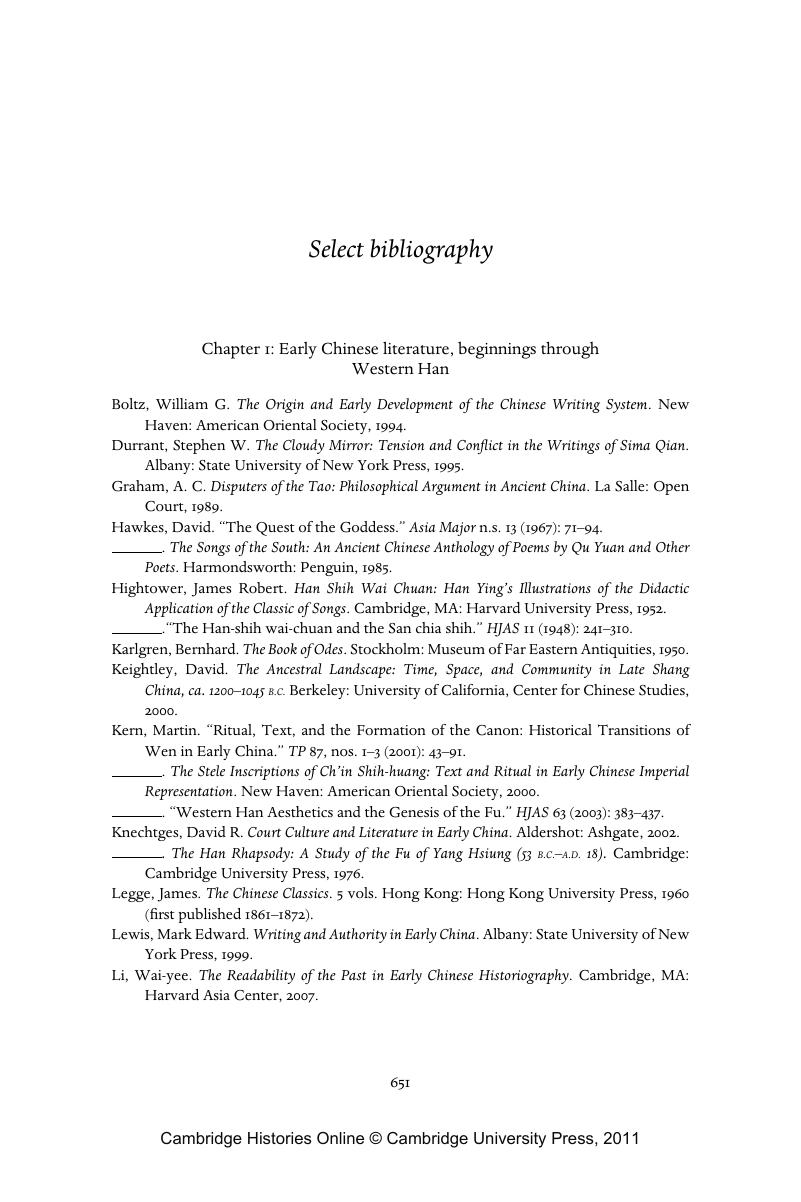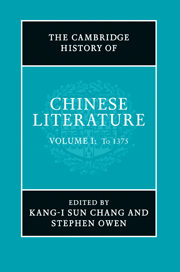Book contents
- Frontmatter
- Introduction
- 1 Early Chinese literature, beginnings through Western Han
- 2 From the Eastern Han through the Western Jin (ad 25–317)
- 3 From the Eastern Jin through the early Tang (317–649)
- 4 The cultural Tang (650–1020)
- 5 The Northern Song (1020–1126)
- 6 North and south: the twelfth and thirteenth centuries
- 7 Literature from the late Jin to the early Ming: ca 1230–ca 1375
- Select bibliography
- Glossary
- Index
- References
Select bibliography
Published online by Cambridge University Press: 28 May 2011
- Frontmatter
- Introduction
- 1 Early Chinese literature, beginnings through Western Han
- 2 From the Eastern Han through the Western Jin (ad 25–317)
- 3 From the Eastern Jin through the early Tang (317–649)
- 4 The cultural Tang (650–1020)
- 5 The Northern Song (1020–1126)
- 6 North and south: the twelfth and thirteenth centuries
- 7 Literature from the late Jin to the early Ming: ca 1230–ca 1375
- Select bibliography
- Glossary
- Index
- References
Summary

- Type
- Chapter
- Information
- The Cambridge History of Chinese Literature , pp. 651 - 659Publisher: Cambridge University PressPrint publication year: 2010

